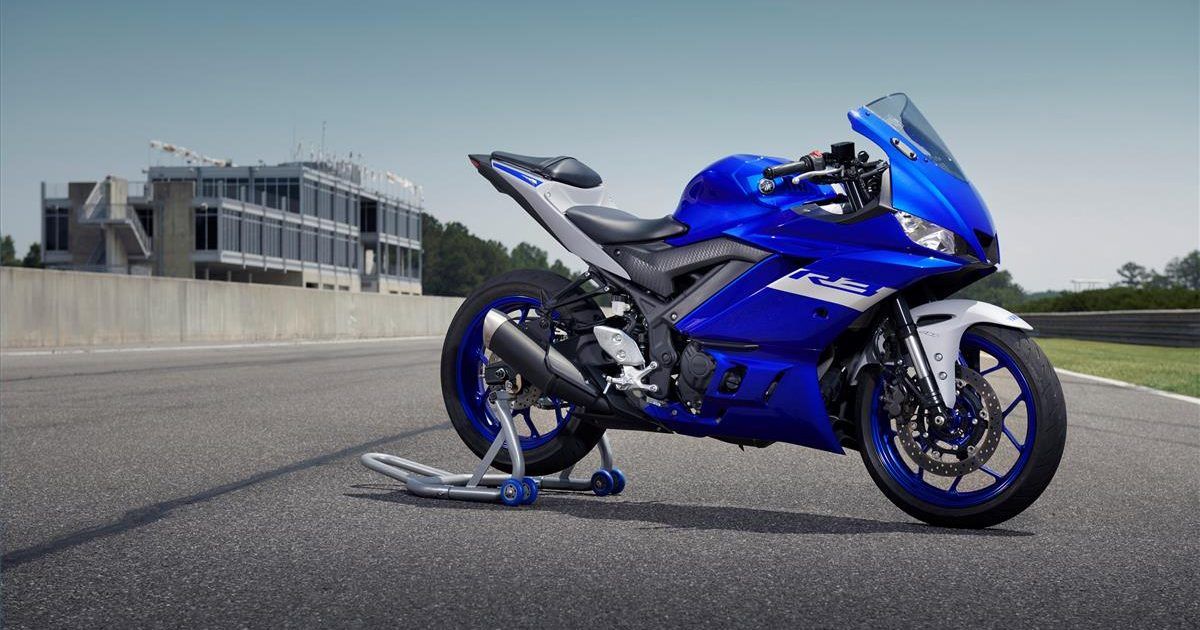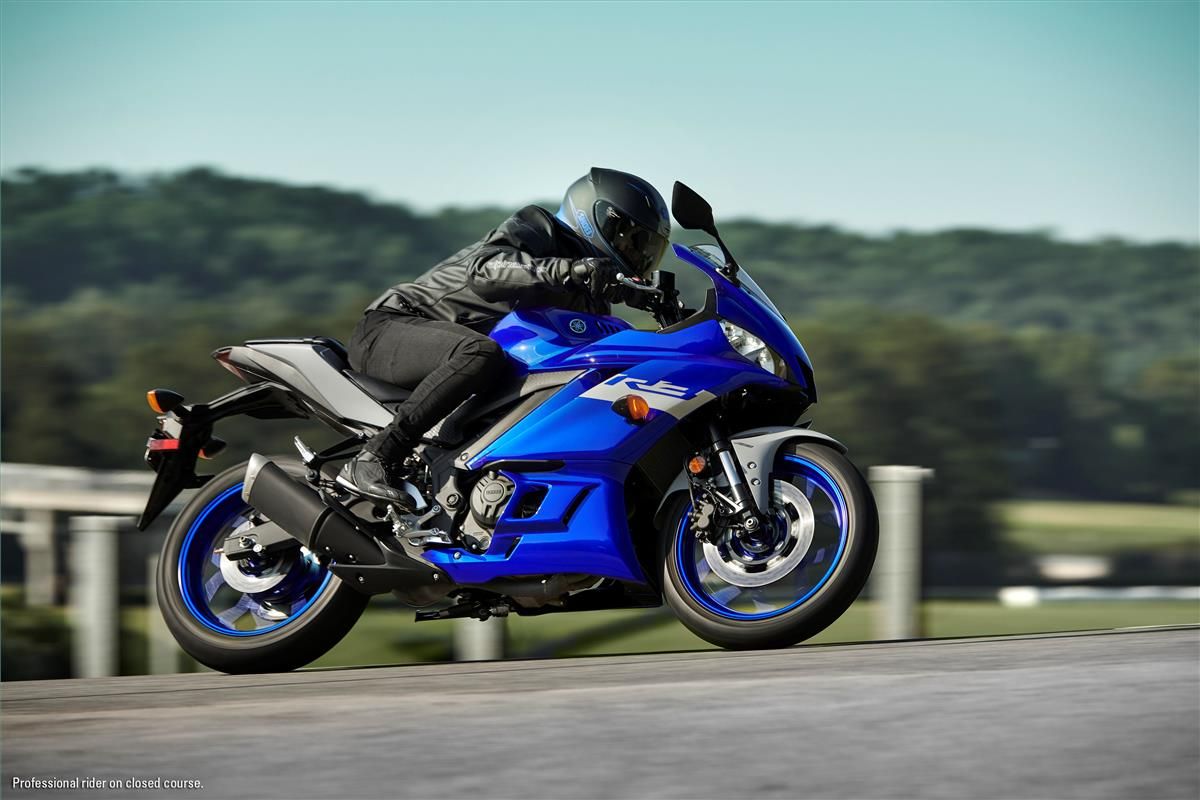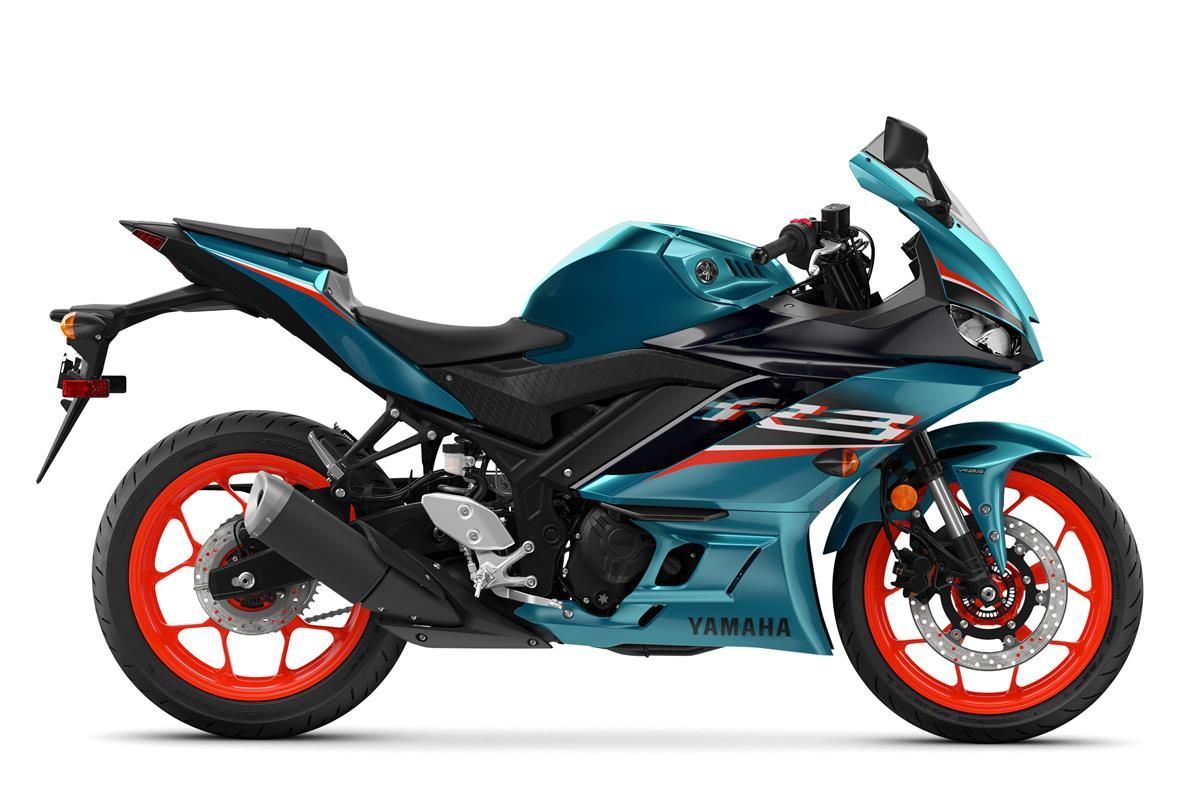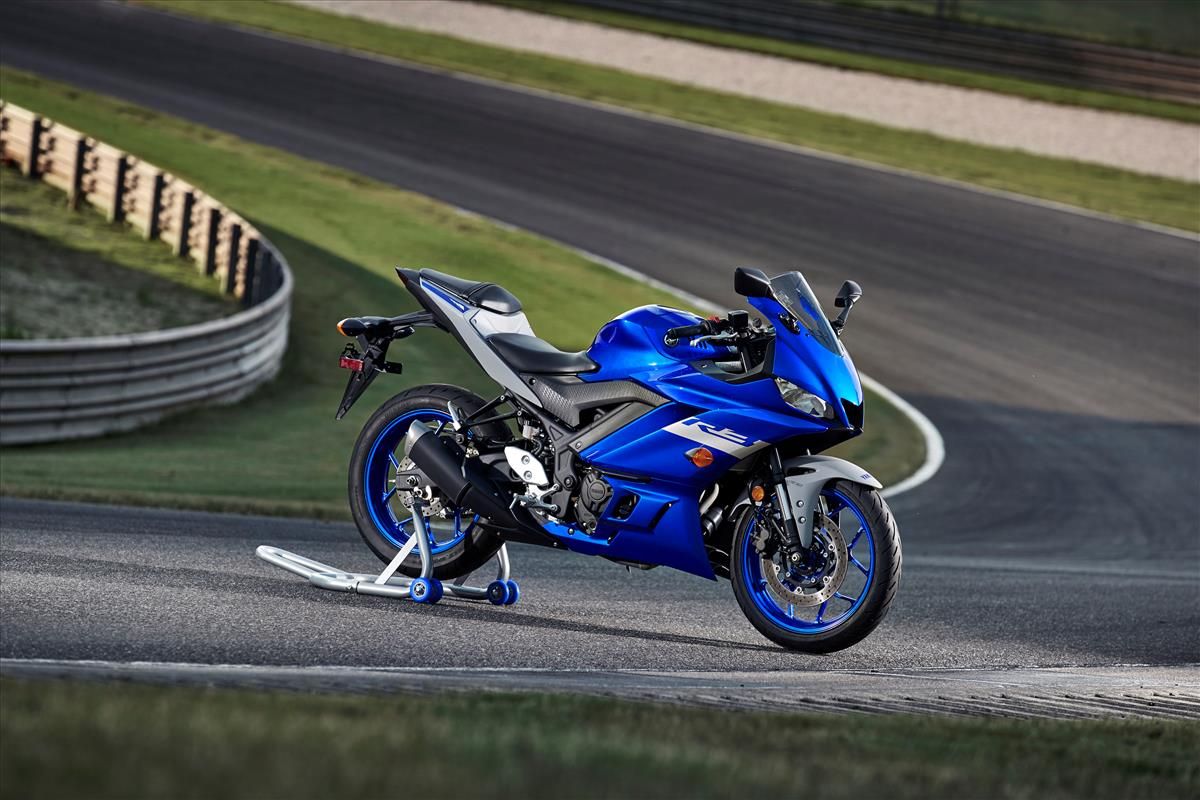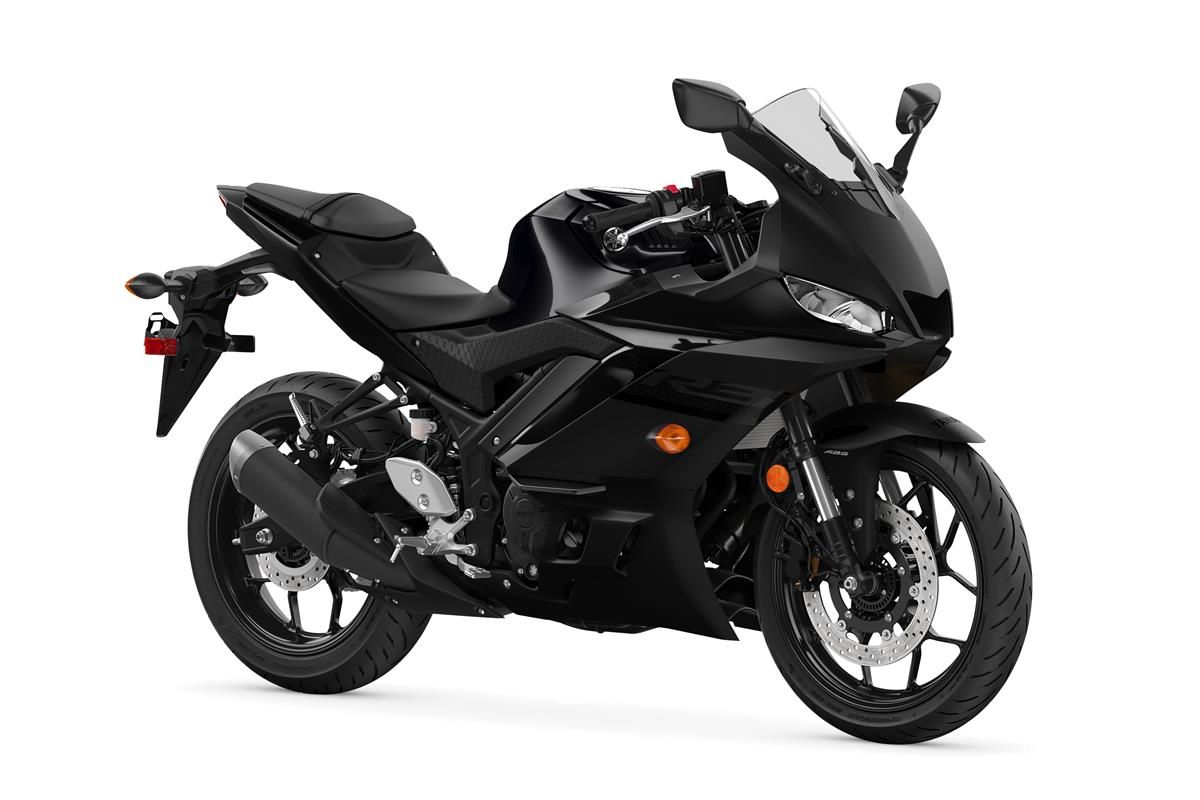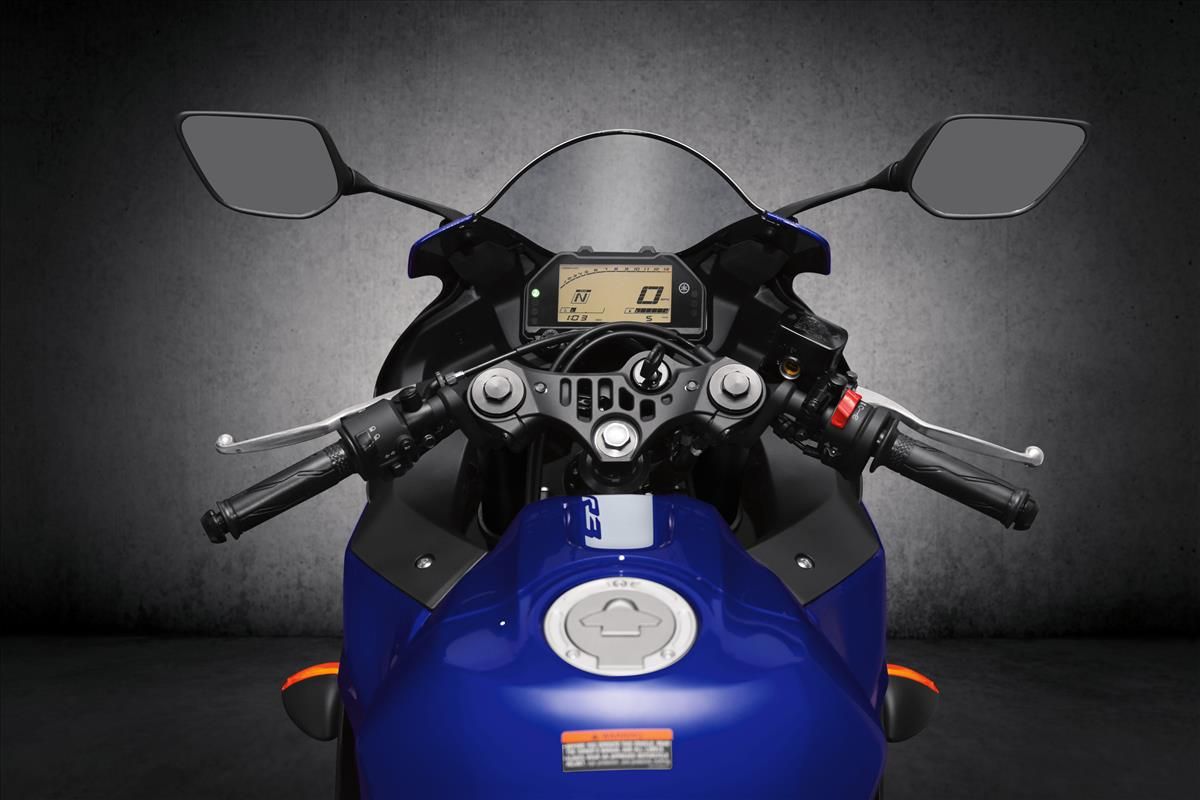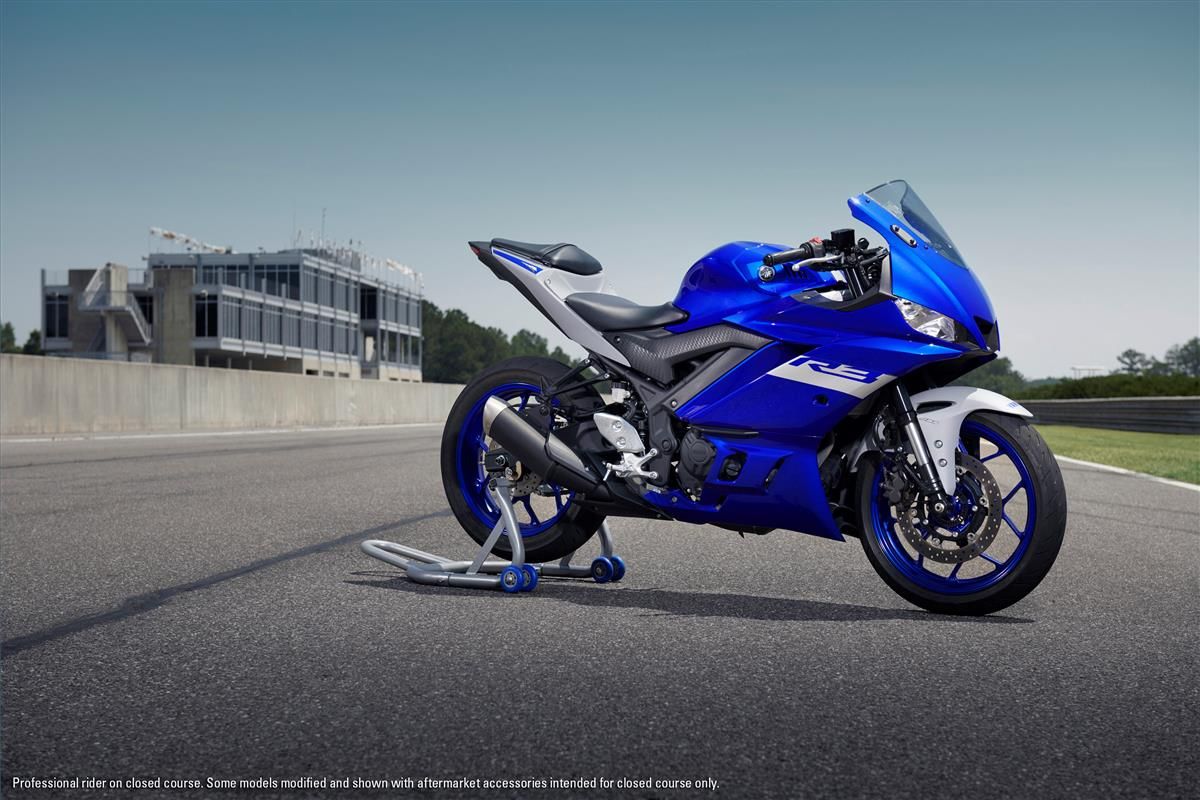The Yamaha YZF-R1 is one of the most iconic names in the superbike world. Many of us motorcycle enthusiasts and adrenaline junkies have dreamt of bringing that blue R1 poster from our childhood to life.
However, running to the dealer and throwing your leg over a 190 HP superbike is strongly not recommended. It might be tempting, that bold stance and furrowed headlights, but let's be real, can you handle an R1? Or better yet, should you?
If you're new to riding motorcycles, or sportbikes, Yamaha offers something that is a little more introductory, the Yamaha YZF-R3.
Overview of Yamaha's YZF-R3
Yamaha debuted the YZF-R3 for the 2015 model year. At the time, the Ninja 300 and CBR 300R had capitalized on the new market of entry-level sportbikes. The new R3 was one of the smallest displacements at 321cc, but the agile handling and supersport looks made the bike an instant success. The YZF-R3 has been Yamaha’s best-selling bike for several years now.
The R3 went unchanged until 2019; the biggest improvement was inverted forks, which increased rebound damping by 120 percent and compression damping by 380 percent. The result was a bike that was tighter and more responsive.
The change also brought a redesign to the YZF-R3. The new plastics, tank, and reshaped front end help the small sportbike fit in with the R family. The narrow LED eyelids with central air duct share the mean look of it’s bigger siblings while also being more aerodynamic and refined.
Yamaha also fixed a few issues that were found in the previous models. Pressure plates were prone to breaking, causing the clutch to not engage properly. There were also faults with the oil pump pressure not being properly regulated, and the upper-triple clamp was known to crack while riding. All of these issues have since been sorted.
The only change made to the 2021 model year is that Yamaha will no longer be offering a non-ABS version of the YZF-R3. Naturally, the new year brings new color options to choose from; this year features an Electric Teal and Matte Stealth Black along with the return of Yamaha Blue and the Monster Energy Yamaha MotoGP Edition.
YZF-R3 Engine and Performance
For 2021, Yamaha foregoes giving the YZF-R3 any engine upgrades, it’s still powered by a 321cc liquid-cooled, twin-cylinder 4-stroke engine that makes a claimed 42 HP and 21.8 lb-ft of torque. Using a 6-speed multiplate wet clutch, the little sportbike can make it to 60 MPH in 5.5 seconds.
The 180-degree crank design and integrated counterbalance have less vibration and delivers the power in a smooth, more refined way. The YZF-R3 doesn’t lack in the revs, either, thanks to the double overhead cams (DOHC), four-valve cylinder heads, and compression ratio of 11.2:1. The quick-revving engine embraces superbike powerband as well, peaking at 12,500 RPM. The USA-spec 2021 Yamaha YZF-R3 has a 3.7-gallon tank and has a claimed fuel economy of 56 MPG.
For the new year, Yamaha claims to have improved the rigidity of the inverted front forks, giving the bike more front-end feedback and control feel. The Monocross rear shock is preload adjustable to help with passengers or cargo, allowing up to 4.9 inches of travel in the back (5.1 in the front).
The R3 gets some bold10-spoke cast aluminum wheels wrapped in grippy 17-inch Dunlop Sportmax tires on both the front and back. Stopping power is provided by a 298mm hydraulic disc with ABS in the front and 220mm in the rear.
YZF-R3: Tech and Comfort
Riding position on the R3 is on the sportier side but more upright than its larger siblings. This combination makes for a canyon carver that is a bit more comfortable on the urban roads and highway commutes. Seat height is 30.7 inches, which is sized to fit most riders.
Keeping true to the character of the YZF-R family, Yamaha built the R3 to provide exceptional handling, particularly on the track. Having a near 50/50 weight distribution and only 375 pounds when wet, the YZF-R3 is light, nimble, and corners with ease. Combined with a manageable amount of power, it’s a good bike to learn on.
The revised digital display isn’t colored but features the most important bits, clock, tach, fuel gauge, gear position, and speedometer. Scroll through the options, and the screen will give you an estimated fuel economy, water temperature, and a trip meter. Not much to brag about here, but it gets the job done.
Yamaha R3 Pricing and Conclusion
One thing that Yamaha has increased for 2021 is the price of the YZF-R3. For an additional $300 over the previous year, the R3’s starting price will be $5,299. A reasonable entry-level price for an entry-level supersport. Yamaha offers the all-new YZF-R7 for $8,999, and the iconic YZF-R1 sells for $17,399.
The closest competitor to Yamaha’s YZF-R3 is the Ninja 400 from Kawasaki. Both are sharp-looking, agile sportbikes with a reputation to stand behind. The Ninja 400 can be optioned with ABS for an extra $400, and if you go without, the apprentice Ninja starts around $4,999. However, Kawasaki doesn't give the Ninja 400 inverted forks as standard.
If you’re set on inverted forks, the KTM RC 390 is both priced and equipped to compete. The Austrian bike looks rad and is priced at $5,549. If you want to get a little naked, BMW offers an option in the 300-400cc sport class for $5,045, the BMW G 310 R.

